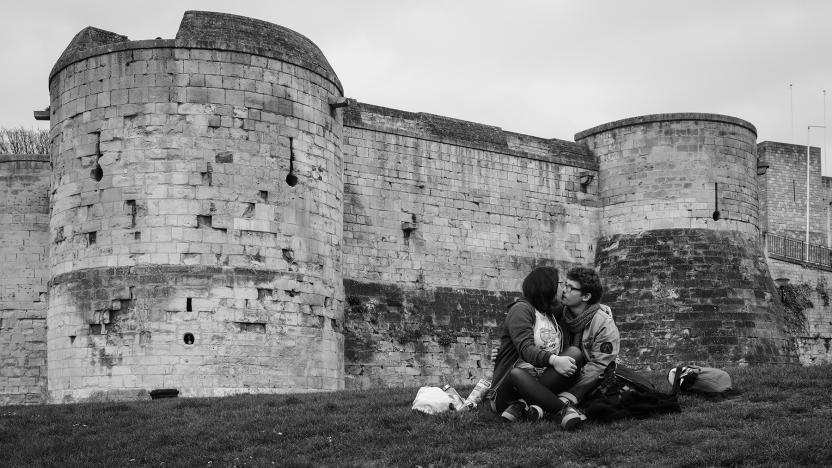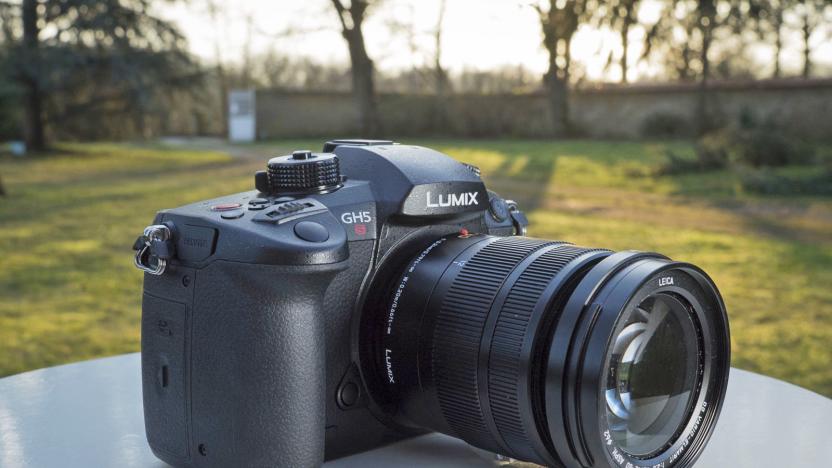x100f
Latest

The Fujifilm X100F is on sale at $900
We love Fujifilm's X100F, but it's definitely not for everyone. It's a fixed-lens APS-C camera best suited for street photography, blending the excellent 24.3-megapixel X-Trans sensor found in mirrorless models like the X-T2 with a 23mm (35mm equivalent) f/2 lens. As is par for course with Fujifilm cameras, you'll find a ton of traditional dials for controlling ISO, aperture and exposure compensation. The X100F is also fairly flexible, with a hybrid viewfinder that can operate like a rangefinder, a traditional EVF or a blend between the two. One thing it's not, though, is cheap. At $1,300, you've always had to really want the X100F to even consider buying it. What about $900, though? That's the price it's just dropped to on Amazon, and... I'm very tempted.

Use the camera in your brain to master street photography
Like many camera buffs, I've done a fair amount of street photography, stalking subjects in markets, parks and tourist areas. Unfortunately, I often come away with little to show for it. That's particularly frustrating, because I live in Paris on a beautiful street with endlessly interesting subjects and settings. My challenges with the genre -- poor ideas, a fear of confrontation and technical challenges -- certainly apply to other types of photography. However, they're magnified on the streets, due to the improvisational nature and factors out of my control, like subjects, lighting conditions and weather.

How to buy a high-end camera in 2018
When photography or filmmaking becomes a consuming passion or a career rather than a hobby, you might look longingly at fancier equipment. Luckily, "enthusiast" cameras have edged so close to professional gear that there's no need to spend $4,000-plus for models like the Sony A9, Canon EOS 1DX Mark II, Hasselblad X1D or Nikon D5. For considerably less, you can pick up Sony's A7 III, the Nikon D850 or, for videographers, Panasonic's GH5s -- and get performance that's nearly as good. But which suits you specifically? We're here to help.

A closer look at Fujifilm's X-T20 and X100F compact cameras
Fujifilm's first medium-format mirrorless, the GFX 50S, isn't the only camera the company is getting ready to launch. Yesterday, it also revealed the X-T20 and X100F, the latest additions to its X-series line of compact shooters. Even though the X-T20 is ostensibly a successor to the X-T10, it's actually more like an affordable version of the X-T2. Meanwhile, the X100F is geared toward fans of fixed-lens systems. Both feature new X-Trans sensors, classic retro designs and Fujifilm's trademark physical dials, which lets you easily adjust settings like exposure compensation and shutter speeds.

Fujifilm's X100F should be its best fixed-lens camera to date
The X100 has, since its inception, been for many the ultimate compact camera. Originally released in 2010, it was the first entry to Fujifilm's X-series of digital cameras, pairing classic aesthetics with a 23mm (35mm equivalent) prime lens, hybrid optical-electric viewfinder and a APS-C sensor. Fujifilm has since released the X100S, which brought with it the company's X-Trans sensor, and the X100T, with a range of more subtle improvements. Now, the company is trying again, with the X100F. So, what's new? If you're staring down the barrel of its lens, "not much" appears to be the answer. It's still got the classic X100 design, dominated by the 23mm f/2.0 prime lens. But a lot has changed behind the scenes. First, inside is the third-generation X-Trans sensor, as seen in the X-Pro2 and X-T2. It's a 24.3-megapixel unit, and from past experience it's very, very good. The new sensor is joined be an improved 91-point autofocus system.


